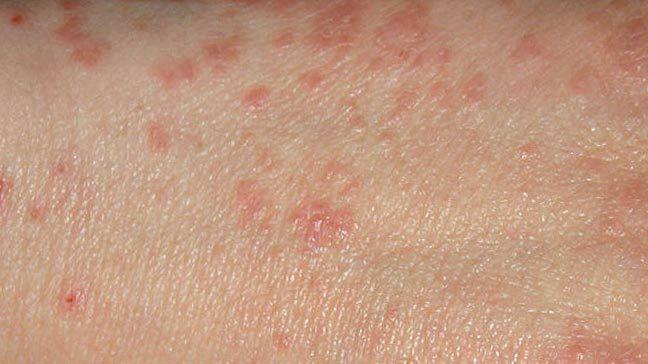
Scabies is a contagious skin condition caused by a parasitic mite called Sarcoptes scabiei that burrows into your skin. It affects about 1 in 1,000 people each month, with outbreaks often occurring in confined environments such as schools or nursing homes, where people are in close proximity to each other. Scabies mites cannot fly or jump and can only be transmitted from one person to another by prolonged, direct physical contact such as prolonged holding hands, or having sexual intercourse with and infected person. Transmission through brief and limited physical contact, such as shaking hands or hugging someone is unlikely but it can sometimes occur by sharing clothes, towels or bedding with an infected person.
Symptoms
The two main symptoms of scabies are:
Itching
The itch is caused by the body’s reaction to the mites droppings. It may take four to six weeks for the itch to develop initially, however if you have been infected before, you can have symptoms in 1-2 days. The itch is generally worse at night or after a hot bath/shower when your skin in warmer.
Rash
The rash usually appears shortly after the itching starts. It is typically a blotchy, lumpy, red rash. The rash can usually affect any part of the body, apart from the head. It is usually most obvious on the inside of the thighs, around the waist, buttocks, armpits and groin area.
Diagnosis
Your doctor or totalhealth pharmacist can often diagnose scabies by the appearance of the rash. Your doctor may also look for mite burrows by applying ink to the skin and then wiping it away. If any burrows are present the ink will have tracked into the burrows and show up as a dark line.
Treatment
Treatment is necessary for anyone who has scabies and also all household members, close contacts and sexual partners of that person even if they do not have symptoms. Everyone should be treated at the same time to avoid reinfection.
The most common treatment is Permethrin Cream (Lyclear). This is available over-the-counter and on prescription from your totalhealth pharmacy. It can be used in babies from 2 months. An adult will need 30g (one tube of cream) to cover the body. The cream should be applied to your whole body, except your head, paying particular attention to difficult-to-reach areas, such as your back, the soles of your feet, in between your fingers and toes, under fingernails, and on your genitals. The cream is applied when your skin is cool and dry, not after a hot shower or bath. It is left on for 8-12 hours before washing it off thoroughly. It is important to reapply the cream to any area that is washed during the treatment period e.g. hands. The treatment should be repeated after 7 days.
All clothes, towels and bed linen should be washed at a temperature above 50oC on the day you first apply the cream to kill the scabies mites. Clothing that cannot be washed should be kept in a sealed plastic bag for 72 hours to contain the mites until they die. Other alternatives to kill mites are ironing with a hot iron, dry cleaning or putting the items in a dryer on a hot cycle for 10-30 min.
The itch can be treated topically by applying hydrocortisone or menthol creams, or by oral antihistamines. The most effective antihistamine for treating scabies itch is chlorphenamine (Piriton). This can cause drowsiness so care must be taken if driving or operating machinery.
Note: The itch can persist for 2-4 weeks even after successful treatment.
totalhealth Pharmacist’s Advice
 Patients should see your doctor or totalhealh pharmacist if you think you might have scabies, especially if they are elderly or have a lowered immunity. These patients are more at risk of developing crusted or Norwegian scabies, a rare form of scabies where there are a large number of mites on the skin.
Patients should see your doctor or totalhealh pharmacist if you think you might have scabies, especially if they are elderly or have a lowered immunity. These patients are more at risk of developing crusted or Norwegian scabies, a rare form of scabies where there are a large number of mites on the skin.
 Repeated scratching of the skin may break the skins surface, increasing the chance of secondary bacterial infections. These will often require antibiotic treatment from your doctor.
Repeated scratching of the skin may break the skins surface, increasing the chance of secondary bacterial infections. These will often require antibiotic treatment from your doctor.
 Scabies can make existing conditions such as eczema worse. Using mild steroid creams e.g. hydrocortisone and emollients can minimise this effect.
Scabies can make existing conditions such as eczema worse. Using mild steroid creams e.g. hydrocortisone and emollients can minimise this effect.